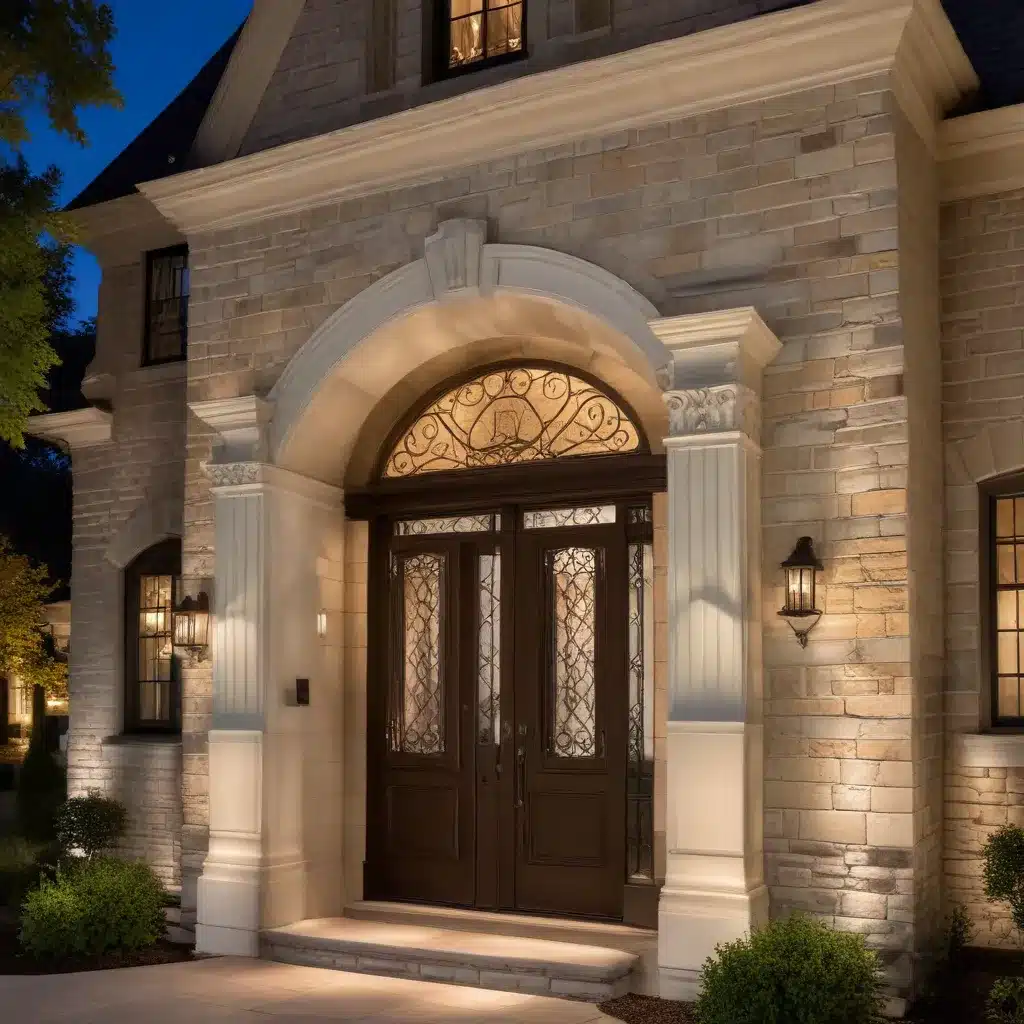
The Art of Facade Lighting Design
Have you ever wondered how some buildings look so captivating and visually stunning at night? The secret lies in the art of facade lighting design. This intricate craft involves using light to accentuate a building’s unique architectural features, creating a dynamic and memorable impression. As a seasoned construction professional and interior designer, I’m excited to share my insights on this transformative lighting technique.
Facade lighting design is not just about adding random lights to the exterior of a building. It’s a carefully considered process that requires an understanding of the structure, its context, and the desired visual impact. The basic principle is to highlight the building’s distinctive elements, whether it’s a historic landmark or a modern office space. By strategically illuminating these features, you can create a visually appealing and attention-grabbing effect that enhances the overall appearance of the structure.
Mastering the Fundamentals of Facade Lighting
One of the primary considerations in facade lighting design is the appropriate light levels. It’s crucial to avoid overly bright or intense illumination, as it can cause glare and overexpose certain details. Recommended luminance ranges vary depending on the type of building: for residential buildings, a range of 5-15 footcandles is recommended; for commercial storefronts, a range of 20-50 footcandles is suitable; and for monuments, a range of 10-30 footcandles is recommended.
The choice of color temperature also plays a significant role in influencing the ambiance and visual impact of the facade lighting. Warm white light in the 3000K range can create a cozy and comfortable feel, while cooler shades around 5000K can add vibrancy and contrast. The use of color-changing LEDs allows designers to dynamically alter the mood of the facade, providing endless possibilities for creative expression.
Lighting Techniques and Facade Materials
Strategic light placement is key to achieving the desired effect. Uplighting from below the building creates depth and reveals the architectural forms, while downlighting is effective in minimizing shadows and glare. Grazing light across surfaces accentuates textures and adds dimension, while side lighting illuminates without overexposing certain areas. Flood lighting evenly washes the entire facade, while accent lighting spotlights specific details, entryways, or features. Combining flood and accent lighting provides a balanced approach to the overall design.
The type of building materials used for the facade also plays a crucial role in the lighting design. Different materials have unique properties, such as reflectivity, transparency, texture, and color, which influence how light interacts with them. Understanding these characteristics is essential in selecting the appropriate lighting techniques and fixtures.
For modern high-rise buildings with expansive glass and steel elements, cool white or colored LEDs in the 5000-6500K range can create a sleek and vibrant effect. Linear LED lights or strategically placed flood lights can be used to achieve a visually stunning contrast with the night sky.
On the other hand, stone and brick facades require lighting that enhances the texture and warmth of these materials. Lower color temperatures in the range of 3000-4000K are suitable to match the inherent tone of the masonry. Facade grazing fixtures can be used to cast small shadows that emphasize the tactile nature of the brickwork or stonework.
Embracing Sustainability in Facade Lighting
Sustainability is a critical consideration in facade lighting design, as it not only impacts the environmental footprint but also the long-term maintenance and operational costs of the lighting system. Energy-efficient LED lighting and smart lighting controls can significantly reduce energy consumption and minimize the environmental impact.
It’s also important to consider the effect of lighting on wildlife and implement measures to mitigate any negative consequences. Additionally, the long-term maintenance of lighting fixtures should be taken into account to ensure a sustainable and environmentally friendly design approach.
Enhancing Historic Buildings with Thoughtful Lighting
When it comes to historic buildings, a minimalist lighting approach is often preferred to protect the architectural heritage while still providing visibility and safety. The use of warm light tones in the range of 2500-3000K helps to harmonize with existing lamp posts and period buildings, creating a cohesive and authentic atmosphere.
In this context, it’s recommended to focus uplighting on entryways, signs, and ornamental details, rather than uniformly washing the entire exterior surface. By using accent lighting strategically, the architectural features can be highlighted without overpowering the building’s character, ensuring a respectful and sympathetic lighting design.
Unlocking the Transformative Power of Facade Lighting
Facade lighting design is a powerful tool that can elevate the aesthetic appeal of a building, creating a captivating visual experience for both occupants and passersby. By carefully considering various factors such as architectural elements, color schemes, lighting techniques, and sustainability, you can transform the overall ambiance and mood of the building, showcasing its unique character and identity.
As a leading lighting manufacturer, we at Local Builder London pride ourselves on providing cutting-edge lighting solutions that not only enhance the beauty of buildings but also optimize energy efficiency and minimize environmental impact. If you’re looking to elevate your next facade lighting project, don’t hesitate to reach out to our team of lighting experts. We’re here to collaborate with you and provide tailored solutions that will bring your architectural vision to life.
Conclusion
Facade lighting design is a complex and creative process that requires a deep understanding of architectural elements, lighting techniques, and sustainability considerations. By mastering these principles, you can transform the exterior of a building, creating a visually stunning and memorable impression that captivates both occupants and passersby.
Whether you’re working on a historic landmark, a modern high-rise, or a residential project, the strategic use of lighting can elevate the overall aesthetic and highlight the unique character of the structure. By embracing the art of facade lighting design, you can unlock the transformative power of light and elevate the architectural experience for all who encounter it.


